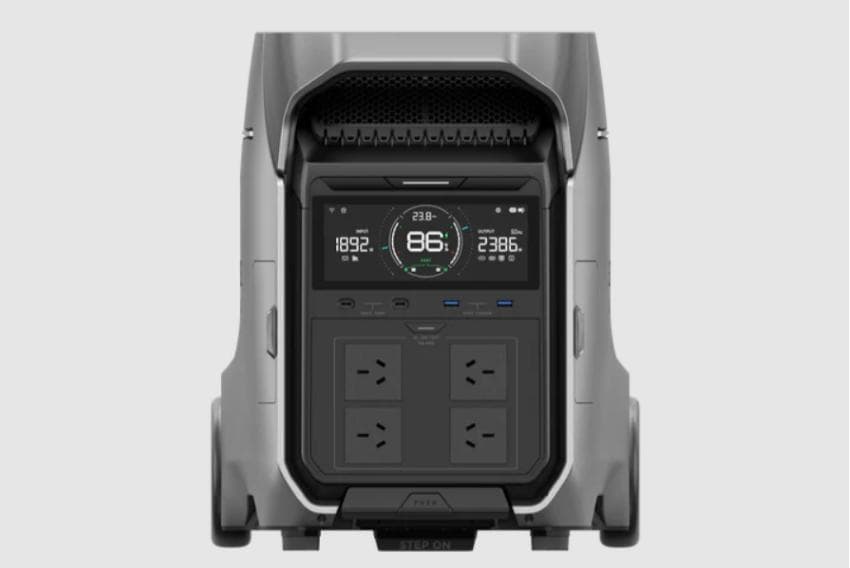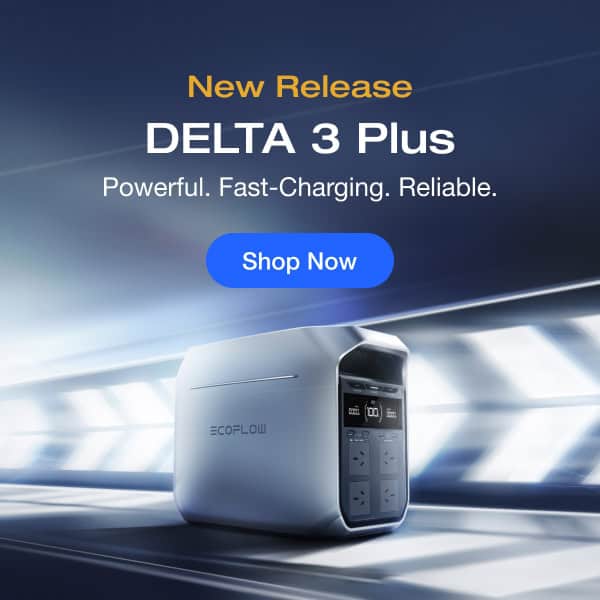Are you tired of relying on the grid for your electricity needs? Maybe it’s the perfect time to install solar battery in your home so you can store the energy generated by your PV solar panels for later use. Not only can this help you save money on your utility bills, but it also provides a good backup power source during outages and contributes to a more sustainable future. In this article, we will discuss the process of installing a solar battery for house, teach you how to choose the right one, along with important safety precautions to keep in mind. Let’s begin!
What Are the Benefits of Installing a Solar Battery for House?
From lowering electricity bills to increasing energy independence, adding a battery to your home’s solar system comes with plenty of advantages. Let’s take a closer look at them:
1. Energy Independence: A solar battery for house will let you store excess energy generated by your PV solar panels, reducing growing dependence on the grid and providing power during outages or low solar production periods.
2. Cost Savings: By using stored PV solar energy during intense peak hours when electricity rates are highest, you can visibly reduce your energy bills and maximize the ROI.
3. Environmental Impact: A solar power house battery will let you use more of your clean, renewable energy, further reducing harmful carbon footprint and dependence on fossil fuel-generated electricity.
4. Increased Self-Consumption: With a battery, you can use more of the solar energy you produce rather than feeding it back to the grid, potentially increasing your overall energy efficiency.
5. Grid Support: In some areas, utilities offer incentives for battery owners who allow their systems to support grid stability during peak demand periods.
How Do You Choose the Right Solar Battery for Your Home
Selecting the right solar battery is the key to optimizing the benefits of your solar panel system. Include the following in your checklist:
1. Capacity: Determine your energy needs and choose a battery with sufficient capacity to meet your household’s requirements during non-solar production hours.
2. Power Rating: Consider the battery’s power output to ensure it can handle your home’s peak energy demands, especially if you plan to run high-power appliances. For example, the EcoFlow DELTA Pro 3 Portable Power Station offers an impressive 4000W power output, making it perfect for powering high-demand appliances like refrigerators and air conditioners. With its adaptable 4–12kWh capacity, it can be customized to suit your specific energy needs
3. Depth of Discharge: Look for solar batteries for house with a higher depth of discharge, as they can utilize more of their stored energy power before needing to be recharged.
4. Cycle Life: Evaluate the battery’s expected lifespan in terms of charge/discharge cycles to understand its long-term value and replacement costs.
5. Compatibility: Check if the solar battery is compatible with your existing or planned solar system, including the inverter and any energy management systems.
6. Warranty: Compare warranty terms, paying attention to both the duration and the conditions, such as maintaining connectivity for monitoring.
7. Installation Requirements: Assess the battery’s size, weight, and solar battery installation location requirements to make sure it fits your available space and meets safety standards.

How to Install Solar Battery?
The installation process varies depending on the type of system you’re implementing:
Off-Grid Solar Battery Systems
Off-grid systems are typically way more complex and expensive, designed for locations without access to the power grid. For guidance, follow these steps:
1. Size the system based on daily energy consumption and desired days of autonomy.
2. Install solar panels, usually with a larger capacity than grid-connected systems.
3. Set up a battery bank with sufficient capacity to power the home for several days.
4. Install a charge controller to manage the flow of electricity from the PV panels to the batteries.
5. Set up an off-grid inverter to convert DC power from the solar batteries to AC power for home use.
6. Install a backup generator for extended periods of low solar production.
7. Implement a comprehensive energy management system to monitor and control power flow.
Grid-Connected Solar Battery Systems
These systems are more common in urban and suburban areas. The installation process is as follows:
1. Assess the home’s energy needs and existing solar system (if applicable).
2. Choose an appropriate battery and inverter combination.
3. Installing the battery in a suitable location, considering temperature control and safety regulations.
4. Connect the solar battery to the home’s electrical system, often near the main switchboard.
5. Installing a battery inverter or ensuring compatibility with an existing hybrid inverter.
6. Set up monitoring systems and configuring settings for optimal energy use.
7. Implement safety measures such as isolation switches and proper labeling.
Hybrid Solar Battery Systems
Hybrid solar systems combine elements of both off-grid and grid-connected systems, offering flexibility and backup power. Here are the installation steps:
1. Install or utilize existing solar panels.
2. Set up a battery storage system.
3. Install a hybrid inverter capable of managing power from multiple sources.
4. Configure the system to prioritize solar and battery power use before drawing from the grid.
5. Set up backup circuits for critical loads during grid outages.
6. Implement a smart power management system to optimize power flow between solar, battery, and grid.
Note: Regardless of the system type, proper planning is crucial. This includes obtaining necessary permits, complying with local regulations, and potentially upgrading the home’s electrical system. Professional installers should be familiar with relevant standards such as AS5139:2019 for battery systems, AS4777.2:2020 for grid-connected inverters, and AS5033:2021 for solar panels.
Safety Precautions You Should Follow During Installation
Adhering to safety precautions during the installation of a solar battery system is important to prevent accidents and promote the longevity of your system. Keep the following things in mind:
1. Electrical Safety: Always work with licensed electricians familiar with solar and battery systems to ensure proper installation and reduce the risk of electrical hazards.
2. Location Selection: Choose a cool, dry location for the battery, avoiding areas prone to flooding or extreme temperatures. Garage is often ideal but always keep proper ventilation.
3. Fire Safety: Follow strict guidelines for placement, including maintaining required clearances and using fire-resistant materials when installing near living spaces.
4. Protection from Impact: If installed in a garage or area with vehicle traffic, use bollards or other protective measures to prevent accidental collisions.
5. Proper Labeling: Make sure that all components are clearly labeled with safety warnings and shutdown procedures to facilitate safe maintenance and emergency response.
6. Monitoring Setup: Properly configure monitoring systems to alert homeowners and installers to potential issues or malfunctions promptly.
Conclusion
Without a doubt, deciding to install solar battery in your home is a real smart investment that can save money, reduce harmful carbon footprint, and provide a reliable backup power source. So be sure to choose only the right solar battery for your home, considering your energy needs, budget, and available space. Remember to follow all safety precautions during the installation process and consult with a professional if needed. Go green, go for renewable energy options today!
FAQ
Here are some commonly asked questions on how to install solar battery.
How can the battery be installed for easier replacement?
For easier battery replacement, it’s best to install the battery in a cool, dry location like a garage. Maintain proper clearance around the battery and consider using a battery cover or awning if installed outdoors. Proper planning and neat installation by a skilled installer can also facilitate future replacements.
How much does it cost to install a solar battery system?
The cost of installing a solar battery system typically ranges from $12,000 to $20,000 AUD depending on the size, brand, and installation complexity. This includes the battery, inverter, and other components. For smaller-scale needs or off-grid power, a Portable Power Station like the EcoFlow DELTA Pro offers an alternative, with prices ranging from $3,500 to $5,000 AUD.
Can you install your own solar battery?
It is not recommended to install your own solar battery due to safety concerns and the need for compliance with regulations. It’s best to hire a qualified and experienced installer to have a safe and proper installation.
Can I add batteries to my existing solar system?
Yes, it is possible to add batteries to an existing solar system. This can be done using an AC-coupled battery, which is relatively quick to install if there are no wiring or switchboard issues. However, more complex installations or those requiring additional components, longer cable runs, or switchboard upgrades may take longer. It’s important to consult with a qualified installer to assess your existing system and determine the best approach for adding batteries.


